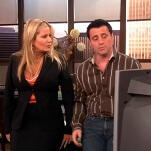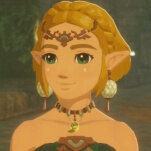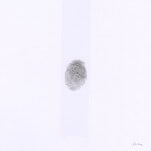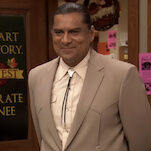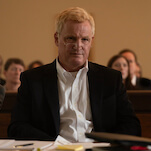Each week, Big Issues focuses on a newly released comic-book issue of significance. This week, it’s Swamp Thing #19. Written by Charles Soule (27, Strongman) and drawn by Kano (H-E-R-O, Gotham Central), this issue taps into the core idea of the character to deliver a promising start to a new run.
Taking over Swamp Thing is not an easy assignment. New creators to the title have always had to live in the shadow of Alan Moore’s legendary run, and the character’s transition from Vertigo to the main DC universe garnered mixed results over the past year and a half. Scott Snyder delivered some truly creepy moments in his run (his standalone #10 with Francesco Francavilla was a highlight), but the “Rotworld” storyline went on for far too long and pulled the book away from what makes the character so cool. A botanist turned protector of Earth’s plant life after a tragic accident burns him alive and fuses him with the vegetation of the Louisiana swamp, Swamp Thing is an extremely powerful, intensely compassionate hero living in the body of a monster. That’s pretty cool.
While different creators have added new layers of mythology to the character, the best writers know that Swamp Thing is driven by one fundamental principle: Nature is scary. The world of plants is alien to mankind, and in that unknown there is plenty of potential for fear. Scott Snyder’s run focused on the mythology of the Green, Red, and Black, and Alec Holland’s relationship with Abigail Arcane, telling a fantasy story with horror elements rather than the other way around. The final act of Rotworld was basically a variation on the valiant prince storming a castle to save the princess trapped in the tower, and the concept of the character allows for much more interesting stories than that.
Swamp Thing #19 is Charles Soule’s first work for one the Big Two comic-book publishers, and it establishes him as a rising star in the world of superhero comics. (Soule will also be filling in on Marvel’s Thunderbolts this summer as Marvel looks for a new writer to replace Daniel Way.) He comes to Swamp Thing with a clear vision for the future, pitting the hero against a new threat who is carelessly manipulating the Green to help suffering areas, and showing that he can organically incorporate the larger DCU into the story without pulling focus from Holland’s struggle. One of the big fears of bringing Vertigo characters into the DCU is that it will turn them into generic superheroes; that’s certainly the impression given by Andy Brase’s cover image, showing Swamp Thing in the Scarecrow’s clutches while Superman gets wrapped in vines. But behind that gatefold cover is a story that’s far from the traditional superhero tale.
While characters like John Constantine have definitely lost some of their bite in the transition to the DCU, Soule is making sure that Swamp Thing remains rough around the edges. The question of what to do with immense power is a recurring one in superhero comics, and Alec Holland has found himself in a complicated situation with his new enemy, known only as the Seeder. The mysterious figure has been traveling the world bending the Green to his will, and at the start of the issue Swamp Thing comes across a jungle oasis in the desert that provides food, water, and shelter to the surrounding people, but is also damaging the intricate web of the Green. Holland has to make the difficult choice between helping mankind or helping the Green, and while his obligation as Swamp Thing means that he’ll always choose the latter, he can’t help feeling guilty.
When Holland goes to the Metropolis Botanical Garden and hears the plants screaming about a colony of rats under one of the banyans, he clenches his fist and crushes the rats into a pulp with the tree’s roots. Soule’s characterization of the plants around Swamp Thing as cheering teenage girls in the presence their favorite celebrity makes the scene all the more unsettling as they applaud his mass rat murder. Soule keeps the narration that was a large part of Snyder’s run, layering it over haunting visuals so that the words have maximum impact. Captioned over a panel showing the rats pouring out of the tree in a rodent bloodslide, Holland narrates: “The plants love that. Like I just played their favorite song. Squee. Thirteen-year-old girls. I could feel it happening. The roots tighten. The rats crunching, popping like filthy little balloons.” It’s a disturbing sequence that establishes how far Swamp Thing will go to perform his duty, and how he loves the high of the kill yet fears what else the Green will ask him to do.
Swamp Thing goes to Metropolis to ask for Superman’s advice in dealing with the guilt of not being able to help everyone at once, but before he can find the Man of Steel, he encounters the Scarecrow stealing a rare hallucinogenic plant from the garden. The superhero elements of the story are downplayed, and most of Scarecrow and Holland’s interaction is through dialogue rather than action, establishing that these men are two gifted scientists first and foremost. Soule even finds an opening for a bit of humor: After Swamp Thing is exposed to one of Scarecrow’s many fear gases, the villain hears a rumble, turns around, and utters “Oops” as he gazes upon the skyline of Metropolis being swallowed by plants. As the wave of green reaches toward the sky on the last page, Superman makes his appearance, and that’s how it should be. Soule shouldn’t have to spend his first issue splitting time between his main character and a guest star, especially one as overexposed as Superman.
Soule’s story is brought to vivid life by his collaborator Kano, who delivers artwork that has a real sense of weight and doesn’t sacrifice detail for dramatic storytelling. Swamp Thing’s appearance changes depending on his surrounding environment, and his shifting look helps tell the story at the start of the issue. Sitting in the middle of the desert (a perfect visual representation of his lonely emotional state), Swamp Thing is a drab brownish-grey mass with needles and thorns growing all over his body. The walking cactus gradually becomes greener and begins to sprout flowers and leaves as he walks into the oasis, and after destroying it, the fresh vegetation begins to wither away as the needles and thorns return. The image on the title page of a grey, emotionless Swamp Thing walking from a group of soldiers who have become entangled in a flurry of vines is a bold visual statement. It shows a character who’s become hardened over time, but still has some softness underneath, as evidenced by the small pink blossoms lingering around his shoulders.
Kano is taking a cue from departing Swamp Thing artist Yanick Paquette in his page layouts, particularly in his use of branches as panel borders during the opening sequence. It’s a visual touch that emphasizes how connected Swamp Thing is with the environment, showing that his roots extend so far they’ve invaded the gutters of the page. Swamp Thing has been a go-to title for psychedelic visuals, and Kano delivers a beautiful two-page sequence of the hero traveling through the network of the Green, taking readers on a microscopic journey that shows the extent of Kano’s botanical knowledge. The panel borders for that scene form a design similar to the veins on a leaf and move toward the lower right-hand corner, each panel getting smaller to visually evoke the sense that the character is being pushed through a tiny hole.
The transition to the next page is especially impressive; as the panels get smaller, the actual images begin to zoom out from a microscopic level as Holland arrives at his destination and begins to reform his body. The final image of the two-page sequence is a small panel of grass, and at the top of the next page, Swamp Thing begins to grow from those blades in a series of circular panels that create the feeling he is radiating from the ground. This is all building to a shot of Metropolis, an urban environment that’s a stark contrast to the natural landscapes at the start of the issue. That sweeping skyline will be overtaken by green by the end of the issue, proving that nothing is safe when nature is threatened. By tapping into that sense of danger, Soule and Kano have shown that there’s still plenty of room for Swamp Thing to thrive in the DCU.


















